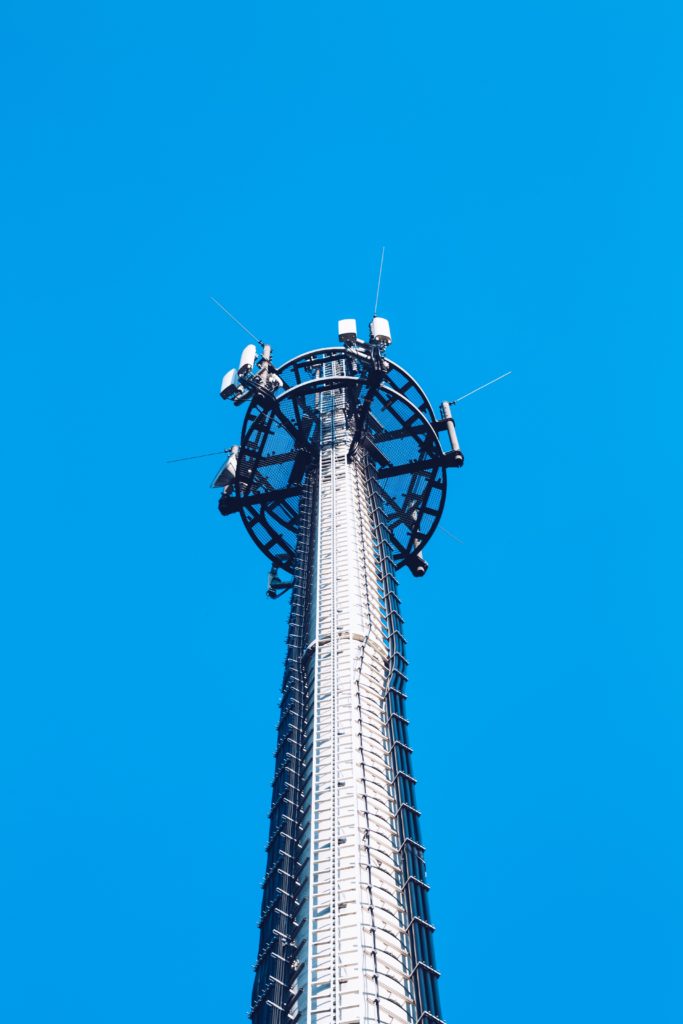5G, 5GE & 5Ghz: What Are the Differences?
5GHz is Not a Cellular Data Speed
When it comes to understanding 5GHz wifi vs 5G cellular, the first thing one needs to know is that they are completely different things that have a relationship in fulfilling our need for internet.
5Gigahertz (5GHz) is a radio frequency. Hertz is used as a measurement of an electromagnetic radio wavelengths, the oscillations of alternating current for our electrical power, or a measurement of time as in the number of wavelengths that occur in a fixed amount of time. If a radio signal is equal to one wave per second, it is a frequency of 1Hertz.
Your home’s electrical power runs in the 50-60Hz range (50 to 60 oscillations per second). The standardly used radio spectrum ranges from 3 kilohertz (3000 Hertz) to 300Ghz (300 billion Hertz).
All radio waves travel at the speed of light in a vacuum (approximately 186,000 miles per second). The medium that the wave is travelling through and obstacles it encounters affect the wave.
For example, our atmosphere slows the speed of these waves somewhat. The higher the humidity, the more the waves are absorbed by the atmosphere. The length of a wave also affects its resiliency to absorption. This loss of signal is called attenuation.
Low frequency waves are longer and more resilient to absorption than high frequency signals. A one Hertz wave is approximately 186,000 miles long and a 300Ghz wave is one millimeter.
Low frequencies travel through obstacles like walls, water, and foliage better. Low frequency signals being longer, require longer antennae.
The extremely low frequency (ELF) land-based transmitters used by the navy during the cold war for submarine communication used antennae with 6000 miles of cable covering 2500 square miles. While these low frequencies carried farther and were more resilient to interference, they carry very limited amounts of data.
In Radio communication, higher frequency is a trade-off of more data capability but less coverage area and signal strength.
Radio frequencies are used to work tv remote controls, microwave food, broadcast talk and text, operate toys, deliver video and more. The frequency that devices use is regulated by the International Telecommunication Union. They decide how different frequencies are apportioned to different technologies and users. This helps eliminate congestion and interference between users.
The frequency spectrum is divided into 12 bands of frequency/wavelength ranges from 3 Hertz to 1000Ghz+.
The 900MHz, 2.4 GHz, and 5.8 GHz (commonly called 5GHz) bands are reserved for unlicensed public/industrial usage. These frequencies are used for qualified industry, science, and medical applications (known as the ISM standards). Your portable phone, microwave, remote controls, etc. use these unlicensed channels.
Other bands in the 40 to 220 MHz range are used by everything from garage door openers to wildlife tracking collars. The 900 mhz band (used by newer portable phones) broadcasts farther than 2.4 or 5 GHz but has fewer available channels. Wifi routers have always used 2.4 GHz channels and the newer wifi routers now have 5GHz channels to use.
So how does the performance stand up on 2.4ghz vs. 5ghz? As far as reception goes, like our submarine example, 1.) Lower frequencies travel farther and travel through obstacles more efficiently than higher frequencies and 2.) Higher frequencies move data faster.
So, the wifi devices in your network that are farthest from the router will likely work better on the 2.4GHz channels and the faster 5GHz wifi channel will work best on the devices close to the router.
5G Cellular Explained
Simply put, the 5G cellular network is the 5th generation of cell phone development. Like each of the preceding networks (1G,2G,3G,4G, 4GLTE, and 5GE) it promises improved performance over its predecessors.
5G is not any particular frequency or signal. It is a descriptor that encompasses improved infrastructure, equipment, firmware, and software designed to deliver 5G cell service with increased coverage, faster speeds, and improved performance.
Cellphones began by using the 824MHz to 849 MHz range. In 2006, the 1700/2100MHz Advanced Wireless Service was opened to provide high speed cellular data service. In 2001 the higher 700MHz band 13 and the lower 700MHz bands 12 and 17 were introduced to provide cellular coverage to rural areas as part of the Long-Term-Evolution plan (LTE).
Currently carriers are adding the lower 600MHz band 71, 2300 MHz band 30 and higher frequency band up to 48GHz to the 5G network.
The Difference Between 5G and 5GE
When comparing 5GE vs 5G, one will find that 5GE is just AT&T’s 4GLTE with a few tweaks that while clearly building blocks for the 5G network, don’t result in the increased performance or speed we would expect from true 5G.
For example, 5GE added 3 carrier aggregation. 3 carrier aggregation allows the carrier to increase bandwidth (more data in a fixed amount of time) by combining the resources of 3 channels at one time in one connection. However, early reports have not shown a great increase in the carrier’s performance.
The mobile analytics company, Open Signal, reported in early 2019 comparing AT&T’s 5GE speed with two of their competitors. Their data revealed that Verizon’s and T-Mobile’s 4G LTE networks were slightly faster than 5GE, meaning, it turned out to be more marketing ploy than true advance in cellular performance. If you were disappointed in your own 5GE experience take heart. More is expected from true 5G.
What 5G Means for Rural Users
It may be a 2-3 years wait before many users see 5G in rural areas. 5G is primarily being rolled out in cities first. This is simple economics for service providers, 5G equipment is costly and denser population centers will create a faster return on the infrastructure investment.
Another issue is that 5G networks are highly dependent on fiber optic to carry the backhaul (the connection of air services to wired service lines that connect the data centers which host internet applications and content). A large percentage of the rural United States is not serviced by fiber optics yet and many remote areas may never see it.
T-Mobile claims coverage to serve well over half of the U.S. population, but only covers about a third of the geographical area. As part of its merger with Sprint, T-Mobile pledged to cover 97% of the U.S. in the next 3 years but that remains to be seen.
In addition, even if rural areas get 5G coverage, rural 5G internet may never demonstrate the speeds seen in denser population zones. 5G rural coverage means customers that are much farther from the cell tower than in the cities. Service providers will use the lower frequency bands around 600 to 700 MHz as these signals will go farther than the higher frequencies used in the city.
However, the downside of that longer wave is a reduction in bandwidth. Open signal reported that city-based 5G is producing speeds in the 1-2GB range while 5G rural coverage is expected to be in the 35 Mbs range.
When can I get 5G?
So the big questions on most people’s mind is, “When is 5g coming out?” and “How do I get 5G? To answer the first question, 5G is out in certain areas. Verizon was the leader in the first roll outs of 5G cell service and is offering 5G data in a variety of cities across the U.S. T-Mobile and Sprint appear to be the current leader in offering 5G cell service in cities across the US and AT&T is moving at a slower pace.
Some are asking, “Do I have 5G?” The four major carriers have maps showing their 5G cell service on their websites. Whistleout.com offers a 5G comparison map. These maps however don’t include business 5G or 5G broadband availability so for now you may have to pick up the phone and call your provider.
For those of us who live in rural America, 5G broadband may be in our future but probably not the near future. Until then, 4GLTE is likely our best bet for now.

Mike Meyer serves as the Vice President of Marketing at Unlimited LTE, where he leads the charge in delivering innovative communication solutions to those who need them most—rural communities and people whose lives keep them constantly on the move. With nearly a decade at Unlimited LTE and over 40 years of combined industry experience across his team, Mike is deeply passionate about bridging the digital divide. For him, it’s not just about connectivity—it’s about unlocking opportunity and improving lives through better, smarter access to the world.




